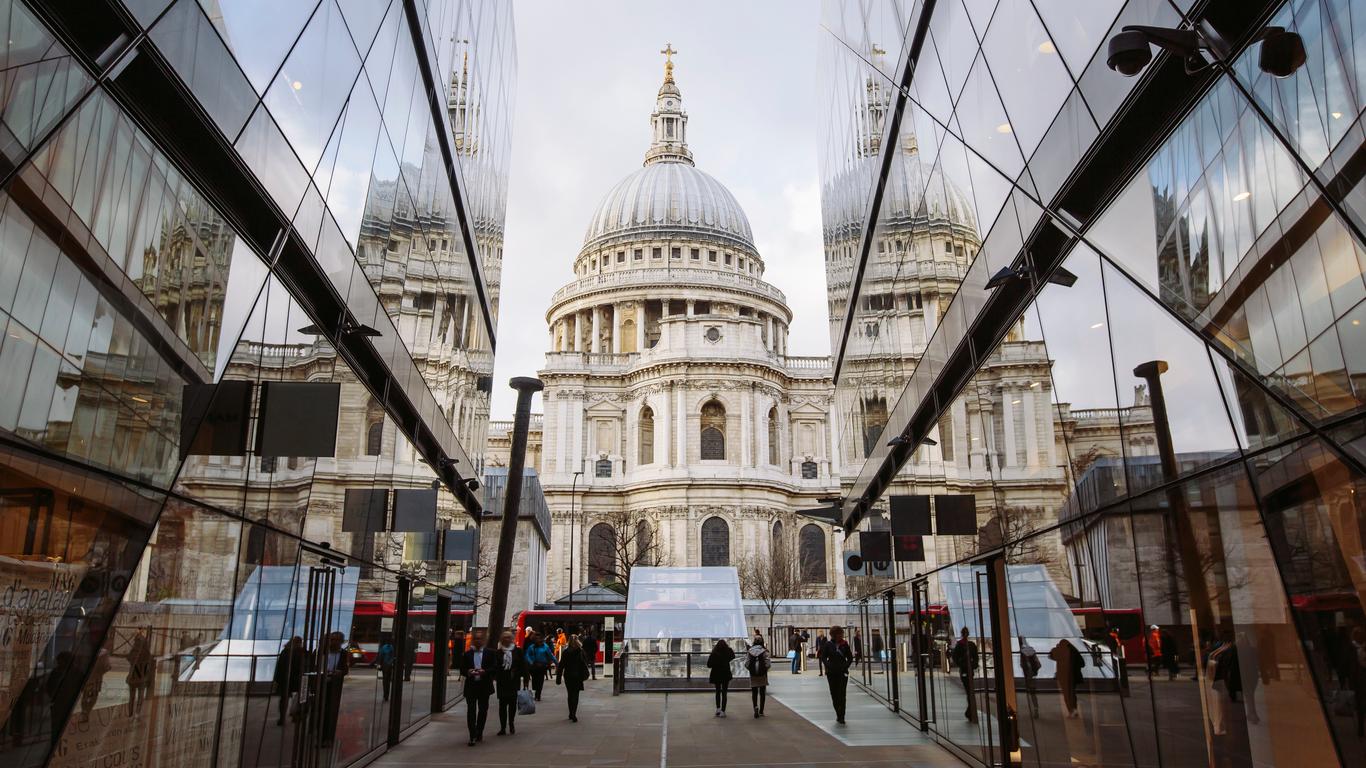Perched atop Ludgate Hill in the City of London, St Paul’s Cathedral is the seat of the Bishop of London and dedicated to Paul the Apostle. While the original church built on the site dates to 604 AD, the current cathedral was designed in the late-17th century in English Baroque style, following the Great Fire of London.
Until 1967, St Paul’s Cathedral stood as the tallest building in London, with its dome instantly recognisable and one of the the city’s most famous landmarks. It was inspired by Michelangelo’s dome of St Peter’s Basilica and rises to a height of 111 metres, specifically designed by architect Christopher Wren to be viewed surrounded by the other church spires he had built throughout the city. The funerals of the likes of Sir Winston Churchill and the Duke of Wellington have been held in St Paul’s, together with Queen Victoria’s jubilee celebrations and the wedding of Prince Charles and the late Lady Diana. The extraordinary dome is supported by pendentives which rise between eight arches, and above its keystones lies the Whispering Gallery, named for its unique acoustic properties and reached along more than 250 steps from the ground floor. The interior is adorned with religious artwork, sculptures and mosaics, with the interior dome painted by Thornbill and a sculpture of the Madonna and Child by acclaimed artist Henry Moore. It also contains the tomb of architect Christopher Wren who was the first to be interred here, with the words above translating from Latin as “Reader, if you seek his monument, look around you”.
St. Paul’s Cathedral is easily accessed by the London Underground from St Paul's Station, located just a short walk to the north across Paternoster Row. Both Parliament Hill and King Henry's Mound in Richmond Park offer spectacular views of the cathedral amidst the London city skyline.
It was at the start of the 7th century that St Augustine anointed Mellitus as the first bishop of the Anglo-Saxon kingdom with a church dedicated to St. Paul built as the seat of the new bishop. While it is assumed that the Anglo-Saxon cathedral and later medieval period churches were built on the same site as the present-day cathedral, whether or not this is true remains unproven.





